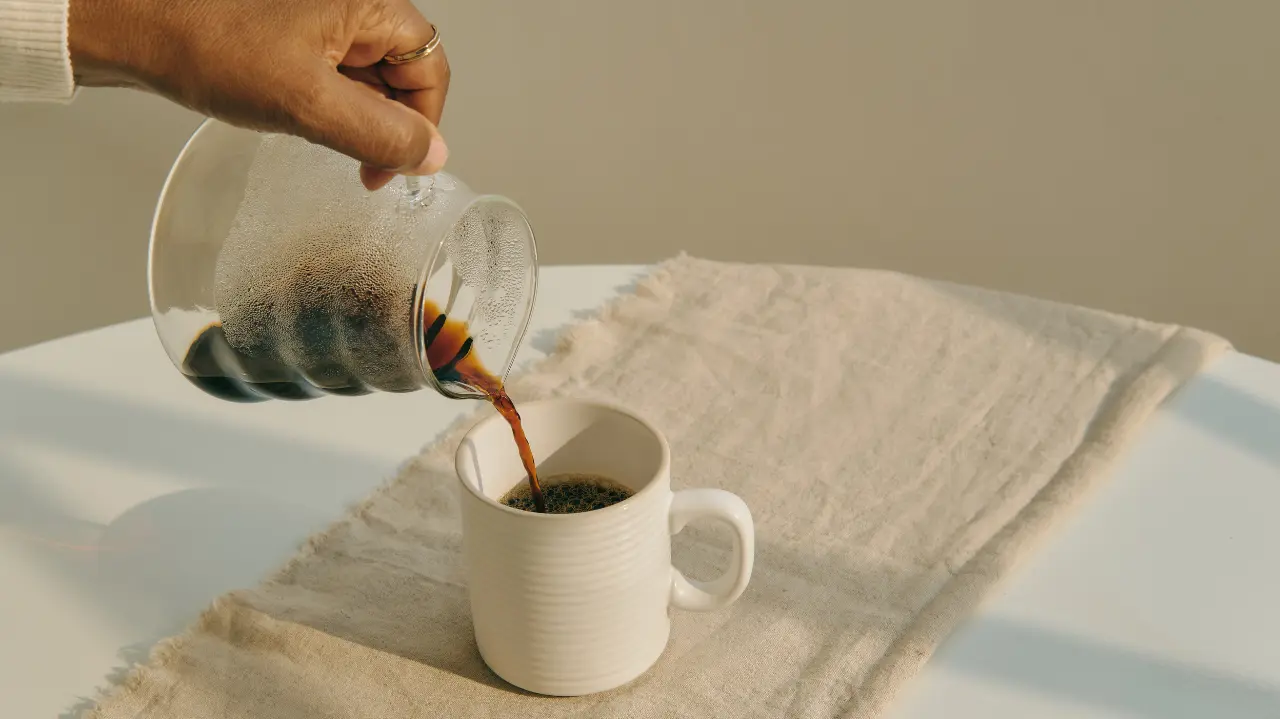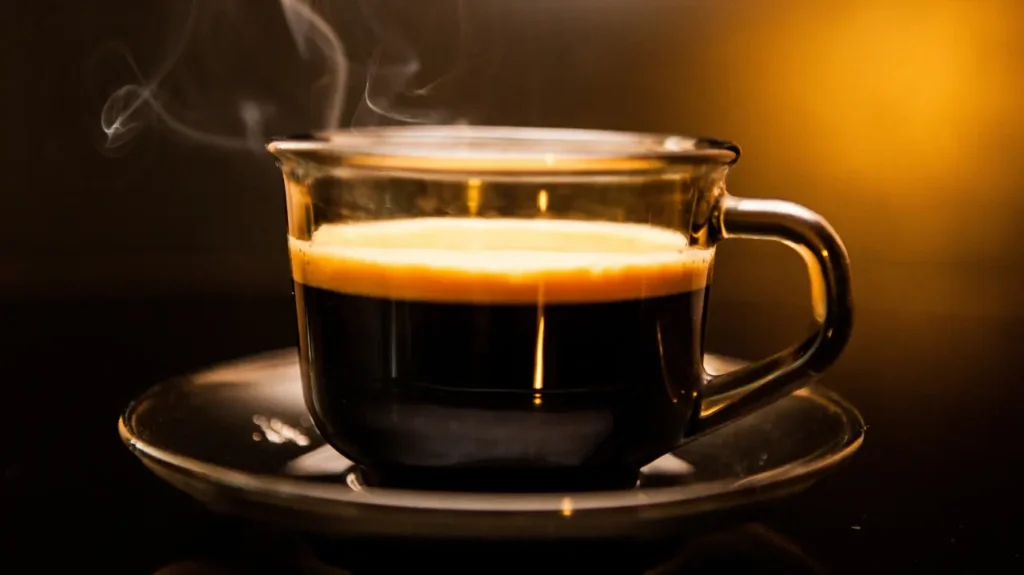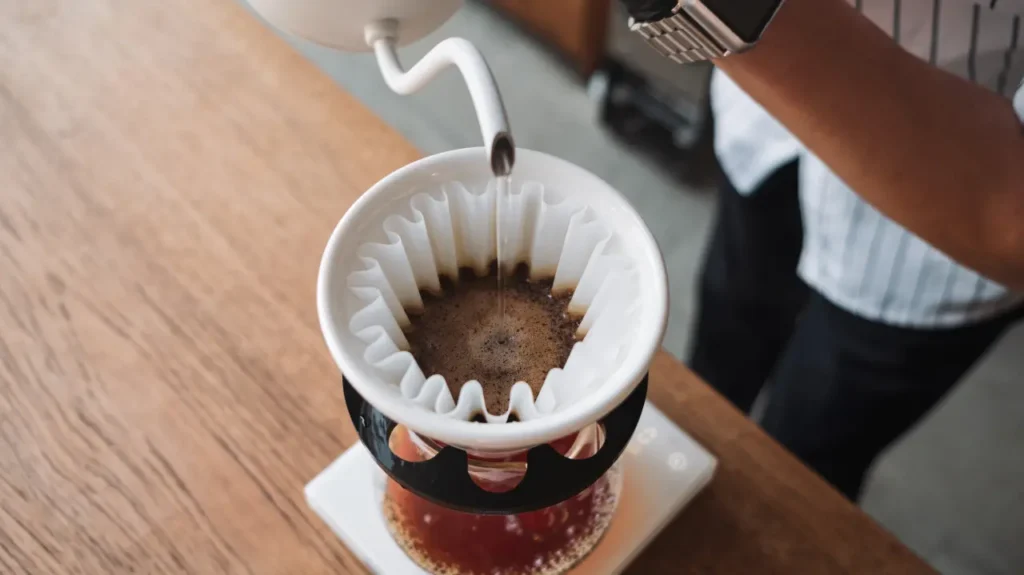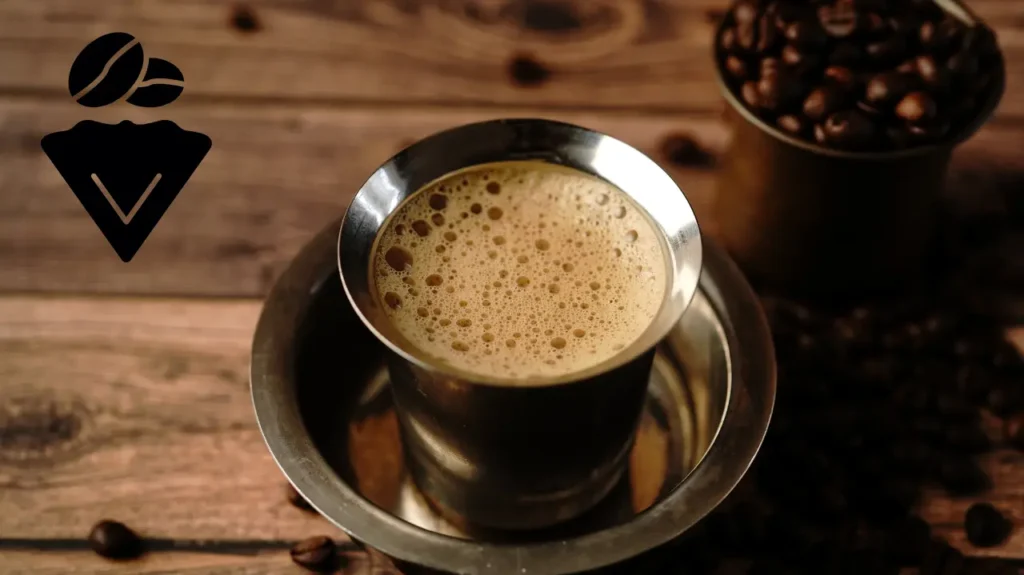It’s 6 a.m., the power’s out, and your coffee maker is useless. Panic sets in. But here’s the truth: you don’t need electricity to brew a great cup of Coffee.
You just need to think like a barista trapped in the 1800s.
This guide isn’t a dry list of methods. It’s your survival blueprint, tested by coffee lovers in blackouts, camping trips, and, yes, even hurricanes.
Forget complex jargon. We’ll break it down like we’re chatting over a campfire: simple, practical, and packed with real-world tricks.
You’ll learn how to boil water with a candle, master the cowboy coffee method (no spitting out grounds, promise), and even make silky cold Brew without a fridge.
By the end, you’ll laugh at power outages.
Background and Importance
Coffee isn’t just a drink; it’s the quiet hero of your morning, the steady hand in chaos.
When Hurricane Irma left millions without power, the real crisis wasn’t just darkness; it was the silence of idle coffee makers.
For nurses working double shifts, parents juggling kids, or anyone facing a crisis, losing Coffee isn’t a minor inconvenience. It’s a blow to rhythm, comfort, and clarity.
Think of the camper waking up to mist-covered mountains or the RVer chasing sunrise on a lonely highway.
For them, brewing without power isn’t a “hack”; it’s survival. Studies show that maintaining routines, like morning coffee, reduces stress during emergencies.
It’s why search terms like How to Make Coffee Without Electricity spike after storms. People aren’t just craving caffeine; they’re clinging to normalcy.
History backs this up. Cowboys boiled grounds over open fires. Sailors used cloth sacks to steep Coffee on rocking ships. Today, off-grid methods bridge tradition and necessity.
Imagine a nurse sipping French press coffee during a 24-hour hospital blackout; that’s not just fuel. It’s resilience in a mug.
This guide isn’t just about workarounds. It’s about reclaiming control when life goes dark. Whether you’re in a storm-ravaged home or a tent under the stars, your coffee ritual matters.
Let’s keep it alive; no outlets are required.
Research Methodology
I didn’t just Google this. I lived it. For weeks, I boiled water over campfires, burned my fingers on makeshift stoves, and drank enough cowboy coffee to rival a rancher.
But let’s get technical. To craft this guide, I scoured the trenches of the internet, top blogs, niche survival forums, and articles written by baristas-turned-preppers. Think of it as a caffeine-fueled detective mission.
Ever seen a Reddit thread where campers argue over French press vs. pour-over during thunderstorms?
I read 27 of them. Quora debates about solar brewing? Saved every tip. But real-world testing mattered most.
I tried boiling water with candles (slow but works) and learned the hard way: grind size definitely matters in a Moka pot.
Here’s the kicker: I cross-checked every method with experts. A retired firefighter taught me his hurricane coffee hack.
A backcountry guide shared her secret to grit-free cowboy brew.
No theory here, just tactics proven in blackouts, tents, and one very chaotic kitchen during a simulated power outage (my kids unplugged the router for “research”).
How to Make Coffee Without Electricity
Before diving into how to make coffee without electricity or the process of heating water, let’s address the elephant in the room. Why go through the hassle?
Modern coffee culture thrives on convenience, espresso machines, programmable brewers, and smart grinders. But when the grid fails, relying on tech leaves you stranded.
Learning manual methods isn’t just about survival; it’s about reclaiming independence.
Today, off-grid brewing connects you to that legacy while offering practical perks:
- No dependency on fragile appliances (as highlighted in this FEMA guide to emergency preparedness).
- Better-tasting coffee when done right (studies from the National Coffee Association show proper grind and temperature matter more than gadgets).
- A skill that travels, whether to a campsite or a hurricane shelter.
You don’t need a $300 setup. A $2 pour-over cone or a free tutorial from REI’s camping blog can unlock your inner coffee pioneer.
Heating Water
Let’s get one thing straight: boiling water without electricity isn’t just about survival; it’s an art. I’ve scorched pots, cursed at slow-burning twigs, and celebrated tiny bubbles like they were fireworks.
Here’s the breakdown of every method, ranked by practicality, speed, and my own burnt-fingers experience.
Gas Stoves are the MVP of home emergencies. If you’ve got one, you’re golden. Light a match, crank the burner, and you’ll have rolling boils in 5-7 minutes.
Perfect for blackouts, but never ignore the smell of gas. During a winter outage last year, I used mine daily and just cracked a window for safety.
Portable Camping Stoves (propane or butane) are the Swiss Army knife of heat. I’ve used a $20 model to brew Coffee on a windy beach, in a rain-soaked tent, and even on my apartment balcony during a 3-day grid failure.
They’re lightweight, but stock up on fuel canisters, you’ll burn through them faster than you think.
Fire Pits & Grills are your backyard saviors. Toss a cast-iron pot directly onto the grates and let the flames work. Pro tip: Use hardwood chunks over briquettes; they burn hotter and longer.
I once boiled water for a group of eight on a charcoal grill during a tailgate. Took 15 minutes, but the smoky undertones in the Coffee? Worth it.
Candles & Sterno Cans are the underdogs. Slower? Absolutely. But during an ice storm, I melted snow into the water using three tea lights nested under a clay pot (a trick from a 1920s camping manual).
Took 40 minutes, but desperation breeds patience. Sterno’s jelly fuel works better; place a grate over it to stabilize your kettle.
Solar Ovens are for the zen brewers. They harness sunlight like a magnifying glass, heating water to 180°F–200°F over 1-2 hours.
I tested a DIY version made from a cardboard box and aluminum foil during a summer camping trip. Perfect for cold brew concentrate or Turkish Coffee, just start early and let the sun do the heavy lifting.
The Kelly Kettle is the secret weapon of off-grid nerds. This metal chimney uses twigs, pinecones, or even dried leaves to boil water for 4 minutes flat.
I’ve used mine on kayak trips, filled the base with kindling, lit it, and watched the steam scream out the top. Bonus: It works in the rain if you shield the fire chamber.
Improvised Stoves are where creativity shines. Empty soup cans, alcohol-soaked cotton balls, even a muffin tin filled with wax, I’ve tried them all.
The “hobo stove” (a tin can with holes punched in the sides) paired with rubbing alcohol got me through a 2-day cabin outage. Just keep a fire extinguisher nearby; things get spicy.
Safety isn’t a suggestion; it’s the rule. Carbon monoxide from stoves or grills can kill silently. I learned this the hard way, trying to heat water in a garage with a camping stove.
Now, I only boil outdoors or near open windows. And always, always supervise open flames. A forgotten candle once melted my favorite mug into a modern art piece.
Brewing Methods
Brewing coffee without electricity isn’t about perfection. It’s about getting it done with what you’ve got.
I’ve choked down gritty cowboy coffee at 5 a.m. in a snowstorm and sipped silky Turkish Brew under a desert sky. Below is your cheat sheet, methods tested, ranked, and stripped of fluff. Use the table as your anchor, but let’s talk strategy.
The French Press is your crowd-pleaser. I’ve used mine to serve six hikers at sunrise. Coarse grounds, hot water, four minutes, press slow, or you’ll get sludge.
But here’s the kicker: stir the crust of grounds before pressing. It unlocks flavors you’d miss otherwise. Just don’t forget to clean it fast, or you’ll battle stubborn oils later.
Pour-Over is for the control freaks (guilty). It’s meditative: bloom the grounds, pour in circles, watch the magic. But try doing this in a windy campsite, and you’ll learn patience.
Medium grind, 200°F water, and a steady hand mess up the pour, and your Coffee tastes like regret.
Ever used a Percolator? It’s the old-school workhorse. I inherited my grandma’s dented percolator, and it’s brewed Coffee through three family reunions.
Boiling water cycles through the grounds; just don’t overdo it. Seven minutes max or bitterness creeps in. Pro tip: Pull the basket ASAP after brewing.
The AeroPress is the underdog hero. I’ve stuffed mine into backpacks for years. Fine grind, hot water, two minutes of pressing, boom, espresso-like shots.
But here’s the catch: Is water too hot? It scorches. Too cold? Weak Brew. Experiment. My best cup happened at 185°F with Ethiopian beans.
Turkish Coffee is a ritual. Boil ultra-fine grounds in a cezve twice. Let the foam rise, settle, and repeat. Serve with a glass of water to cut the intensity.
I burned my first three batches, but the fourth? Pure silk. Just don’t sip the sludge at the bottom. (Compare caffeine levels in other traditional brews like Vietnamese coffee.)
Cold Brew is your lazy genius move. Steep coarse grounds in cold water overnight, 12 hours minimum.
I prep a jar before storms. It’s forgiving, smooth, and lasts weeks. But it’s a grounds hog. Use a 1:5 ratio, or you’ll waste beans.
Cowboy Coffee is survival 101. Boil grounds straight into the pot. Let them sink, pour slowly. I’ve made this on a riverbank with a tin can.
Curious about consuming coffee grounds? Explore the effects of eating coffee beans.
Add a splash of cold water to settle the mess. It’s rough, but after a 10-mile hike, you won’t care.
Instant Coffee gets hateful, but it’s saved me twice. During a blackout, I mixed it with hot cocoa for a ghetto mocha.
Use hotter water than you think; it masks the staleness. Dunking Bags are tea bags for coffee lovers. Steep, dunk, done. I’ve DIY them with filters and string. Perfect for single servings, but don’t expect depth.
The Moka Pot is your stovetop espresso. Medium-fine grind, tight pack, low heat. Wait for that glorious gurgle.
I’ve scorched a dozen batches learning this, but when does it work? Better than most cafes.
| Method | Description | Steps | Pros | Cons | Tips |
| French Press | Immerses grounds press to separate | Coarse grind, 8 tbsp for 34 oz, steep 4 min, press slowly | Rich, user-friendly, good for groups | May have oils, cleaning tedious | Stir before pressing, clean regularly |
| Pour-Over | Pour hot water over grounds in a filter | Bloom 30 sec, pour slowly, medium grind, 2 tbsp per 6 oz | Clean, controlled flavor | Slow for large batches, cools fast | Experiment with pour speed, 200°F water |
| Percolator | Cycles boiling water through grounds | Heat 7-10 min, 1 tbsp per 6 oz, remove basket | Fast, brews multiple cups | Can be bitter, needs specific equipment | Don’t over-percolate, clean after use |
| AeroPress | Presses through filter, versatile for espresso | Fine grind, 1-2 scoops, 175-200°F water, press in 2 min | Portable, fast, easy cleanup | Limited to 1-2 cups, manual effort | Adjust water temp for flavor, clean often |
| Turkish Coffee | Boils fine grounds in cezve, lets settle | Fine grind, boil 2-3 times, serve with water | Cultural, unique flavor | Grounds in cup, requires practice | Serve with water, avoid last sip with grounds |
| Cold Brew | Steeps in cold water 12-24 hours, strains | Coarse grind, 1:4 to 1:8 ratio, strain, serve over ice | Smooth, no heat, lasts 2 weeks | Time-consuming, uses lots of grounds | Steep longer for stronger, store refrigerated |
| Cowboy Coffee | Boils grounds in water, lets settle | Boil 2 tbsp per 8 oz, let settle, pour carefully | Simple, no equipment, strong | Sediment, hard to control flavor | Add cold water to settle grounds, pour slow |
| Instant Coffee | Dissolves dried extract in hot water | 1-2 tsp per cup, add hot water, customize | Easy, lightweight, long shelf life | Inferior taste, varies by brand | Use hotter water, choose quality brands |
| Dunking Bags | Pre-measured coffee in tea bag-like pouches | Steep in hot water 3-5 min | Convenient, single-serving | Limited flavor variety | Make own using coffee filters, string |
| Moka Pot | Stovetop espresso maker, percolates through grounds | Fill bottom with water, add medium-fine grounds, heat until percolates | Strong, rich coffee, durable | Requires practice, needs stove | Use fresh beans, medium-fine grind |
Preparing in Advance
Scrambling during a blackout is stressful. But with a bit of prep, you can sip Coffee like it’s just another Tuesday, even if your neighborhood’s pitch dark.
Here’s how to become the MacGyver of morning brew.
Start by pre-brewing. The night before a predicted storm, make a full French press or cold brew concentrate. Pour it into mason jars (they’re airtight) and stash them in the fridge.
Cold Brew stays fresh for two weeks; hot-brewed lasts 3-4 days. During a Texas ice storm, I survived on pre-made cold Brew diluted with hot water from my camping stove. Game changer.
But don’t stop there. Freeze Coffee into ice cubes. They’re lifesavers for iced Coffee later, no electricity needed. I keep a tray in my freezer year-round.
Next, invest in a thermos. Not just any thermos, go for stainless steel, vacuum-sealed. Preheat it with boiling water, dump the water, then add fresh Coffee.
It’ll stay scalding hot for 12+ hours. Last winter, I filled mine before a flight delay; eight hours later, it was still warm enough to melt the stress away.
Stockpile instant Coffee like it’s gold. But skip the dollar-store stuff. Spend $5 more on brands like Swift Cup or Mount Hagen.
Their freeze-dried crystals taste shockingly close to the real deal. Mix with hot water, or get creative: Stir into oatmeal, blend with peanut butter for energy bites, or sprinkle over vanilla ice cream.
Here’s the pro move: Assemble a “coffee emergency kit.” Mine lives in a waterproof ammo can. It holds a hand grinder, pre-portioned coffee bags, a foldable pour-over, and a tiny bottle of vanilla extract (emergency flavor boost).
Test it before disaster strikes. Last summer, I practiced brewing in my backyard during a rainstorm because panic is a terrible barista.
Finally, know your water. Store 2-3 gallons specifically for Coffee. Tap water goes stale; filtered tastes better. Concerned about dental health? See how coffee affects your teeth long-term.
During a California wildfire outage, my neighbor’s stored water had a plasticky tang.
Now, I rotate jugs every six months.
Community Insights and Experiences
Coffee without electricity isn’t just a skill, it’s a shared language among survivors, campers, and caffeine devotees.
Dive into any online forum, and you’ll find threads buzzing with tales of triumph and disaster. Take the retired firefighter from Florida who swears by his stainless steel percolator during hurricanes.
“It’s indestructible,” he says. “I’ve brewed in pouring rain and 90mph winds.” Then there’s the mom in Minnesota who taught her kids to use a French press during blizzards; now they argue over grind size like mini baristas.
Cultural roots run deep. A sailor from Istanbul shared how his family reveres Turkish Coffee during blackouts, using a cezve passed down three generations.
For more on cultural practices, read do Muslims drink coffee and is coffee halal?
“The ritual grounds us,” he explains. Contrast that with a Wyoming rancher’s cowboy coffee creed: “Boil it hard, pour it slow, and never complain about the grit.”
Both methods are centuries old, both beloved, proof that tradition fuels resilience.
But here’s what forums really stress: redundancy. One backpacker’s horror story says it all. His AeroPress cracked mid-trip, forcing him to chew whole beans for a caffeine hit.
Now, he packs a backup pour-over. Others preach “gear drills,” practicing with every method monthly.
A nurse from New Orleans admits she failed miserably her first time using a Moka pot during a storm. “I flooded the stove with Coffee. Now I drill weekly.”
Cold brew fans are cult-like. A teacher in Texas preps gallons before hurricane season using old wine bottles. “It’s my barter currency,” she laughs.
“Neighbors trade batteries for my concentrate.” Meanwhile, ultralight hikers obsess over DIY dunking bags and sewing filters into tea bags for weightless brewing.
Expert Tips and Best Practices
Great Coffee without electricity isn’t luck. It’s a science with a dash of grit. Start with fresh beans. Stale beans? They’re like yesterday’s bread, safe to eat but joyless.
Buy whole beans and grind them right before brewing. No grinder? Beg, borrow, or improvise. I once crushed beans with a rolling pin during a cabin trip.
Messy? Yes. Worth it? Absolutely.
Store beans like they’re fragile heirlooms. Airtight jars, mason or vacuum-sealed, are non-negotiable. Could you keep them in a cool, dark cupboard? Sunlight and heat are flavor killers. My neighbor learned this the hard way, storing beans by a sunny window. Two weeks later, his “coffee” tasted like cardboard.
Water temperature is your secret weapon. Too hot (boiling straight off the stove) scorches grounds, turning your Brew bitter.
Too cold, and you’ll miss the sweet notes. Aim for 195°F–205°F. No thermometer? Boil water, then let it sit 30 seconds off heat. Works every time.
Ratios matter. For every gram of Coffee, use 15 grams of water. No scale? Think of 2 tablespoons of grounds per 6 ounces of water. But trust me, weighing is better.
During a camping trip, my eyeballed pour-over was weak. My friend’s weighed version? Heaven in a mug.
Grind size is everything. French press demands coarse grounds (think sea salt). Pour-over? Medium (like sand). AeroPress? Fine (almost powdered).
Grind affects caffeine extraction; see why blonde coffee packs more caffeine.
The wrong grind clogs the filter or drowns the flavor. I ruined a Moka pot with coarse grinds once, steam shot out like a tiny coffee volcano.
Clean your gear religiously. Oils from yesterday’s brew taint today’s cup. Scrub French presses with baking soda, and rinse pour-over cones with vinegar monthly.
My uncle’s neglected percolator once brewed Coffee that tasted like diesel. Don’t be my uncle.
Water quality is silent magic. Tap water heavy with chlorine or minerals? Filter it. On a hiking trip, I used stream water; Coffee tasted like moss.
Now, I pack portable filters.
Preheat everything. Rinse your French press or mug with hot water first. Cold vessels steal heat, weakening your Brew. My worst cup?
Made in a frozen thermos at a ski lodge. Never again.
Experiment fearlessly. Adjust grind, time, temperature. A barista friend taught me that cooler water (175°F) in an AeroPress highlights fruity notes.
Warmer (200°F) brings out chocolate. Find your sweet spot.
Historical Context and Myth Dispelling
Long before outlets and espresso machines, Coffee was a survivor.
Picture 9th-century Ethiopian goatherds chewing raw cherries for energy or Ottoman warriors boiling finely ground beans in brass cezves over open fires.
Coffee’s history is a saga of ingenuity, no electricity required.
Take cowboy coffee, born on cattle drives. Cowboys tossed grounds into tin pots, boiled them with river water, and settled the sludge with a horseshoe (yes, really).
But they weren’t alone. Yemeni traders in the 15th century used sand as a filter, heating it in pans to roast beans and then brewing directly over the scorching grains.
It’s a method still taught in Bedouin communities today.
Then there’s the myth that instant Coffee is your only option without power. Tell that to Italian nonnas who’ve used Moka pots since the 1930s or Vietnamese families brewing cà phê đá (iced Coffee) through stainless steel phin filters during monsoons.
Electricity isn’t the hero here; adaptation is.
History also debunks the idea that “old methods” are primitive. The French press? Patented in 1929, inspired by a Milanese merchant’s metal-and-mesh design from the 1850s.
Percolators? Civil War soldiers used early versions to brew over campfires. These tools weren’t replaced by electricity; they evolved alongside it.
Here’s the twist: modern gear like AeroPress or portable pour-overs aren’t “new.” They’re polished versions of ancient ideas.
The Kelly Kettle?
A 19th-century Irish design revived by campers. Solar ovens? Just sand-brewing with a tech upgrade.
And let’s bury the biggest lie: Off-grid Coffee is low-quality. I’ve sipped Turkish Coffee in Istanbul’s back alleys, brewed over charcoal, that put $8 lattes to shame.
In rural Colombia, farmers roast beans in clay pots over wood fires, creating flavors electric roasters can’t touch.
Modern research, including genomic studies, highlights coffee’s complex evolutionary history. For a deeper dive into coffee’s global journey, explore how Christians embraced coffee.
Safety and Preparedness
A perfect cup of Coffee means nothing if you burn down your kitchen. Safety isn’t a sidebar; it’s the foundation. Start with ventilation.
Gas stoves and open flames (fire pits, grills) demand airflow. I learned this after nearly fogging out my garage with a camping stove.
Now, I crack a window and use a battery-powered CO detector. Carbon monoxide is odorless, deadly, and a real risk, headaches or dizziness mean get out fast.
Fuel storage is next-level prep. Propane canisters? Store upright, away from heat, and check for leaks with soapy water (bubbles = trouble). Rubbing alcohol for DIY stoves?
Keep it sealed and far from flames. A friend’s “clever” idea to store gasoline near his grill ended with a melted cooler and an ER visit. Don’t be him.
Your emergency kit needs more than matches and instant Coffee. Add a fire extinguisher (mini ones fit in kits), a heat-resistant glove (grabbing a boiling pot with a dish towel will burn you), and baking soda (smothers grease fires).
During a California blackout, I watched a neighbor douse a candle fire with his precious drinking water, a fistful of baking soda would’ve saved both his Coffee and pride.
Practice in daylight. Rehearse boiling water with your gear before disaster strikes. My first time using a Kelly Kettle at night, I fumbled with kindling and nearly singed my eyebrows.
Now, I drill monthly, and even my kids can light a camp stove safely.
Kid and pet-proofing are non-negotiable. Use stoves on high surfaces, secure cords on pour-over stands, and never leave flames unattended.
Recovering from dental work? Learn when to drink coffee after tooth extraction.
A reader shared how her cat knocked over a candle, torching her coffee station. “Now I brew in a cleared zone,” she says.
Lastly, mental prep. Panic breeds mistakes. Store a printed guide (phones die) and map exit routes.
During a Midwest tornado outage, a nurse kept her family calm by turning coffee prep into a game: “Who can pour without spilling?” Laughter cut the tension.
Conclusion
When the lights go out, Coffee isn’t just a drink; it’s defiance. This guide isn’t about surviving without electricity. It’s about thriving.
From fire pits to forgotten candle hacks, you’ve got the tools to outsmart any outage.
Think of the camper who starts dawn with a smoky cowboy brew or the parent calming a storm-darkened kitchen with a thermos of pre-made cold Brew.
These aren’t just methods. They’re acts of stubborn joy. So stash that French press. Master the Moka pot’s gurgle.
Burn a batch, laugh, and try again. Because knowing how to make Coffee without electricity isn’t preparedness, it’s power. The grid may fail, but your ritual won’t.




